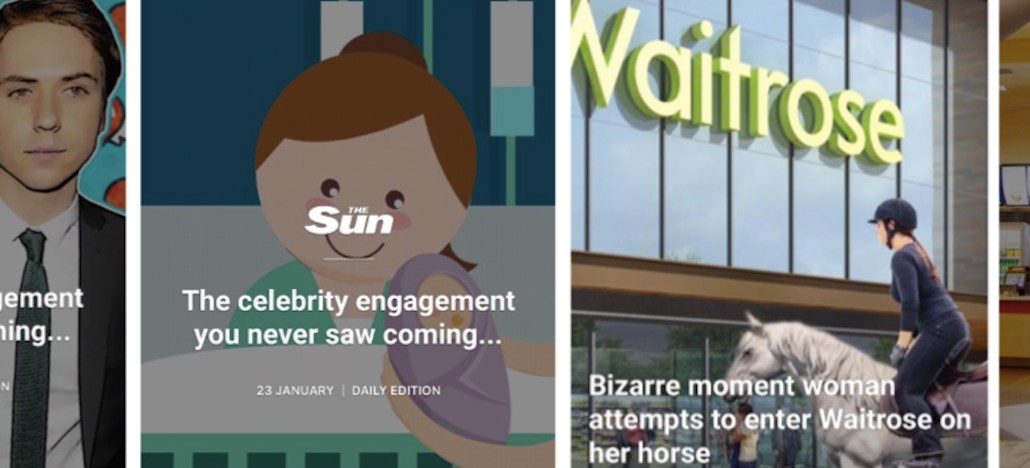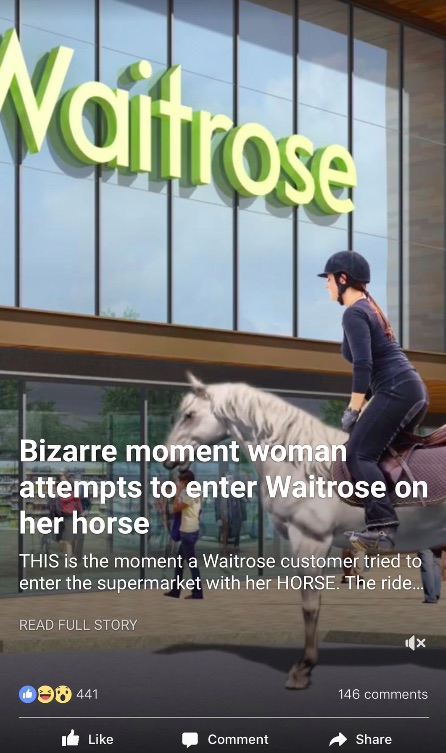Register by Jan 13 to save on passes and connect with marketers from Uber, Bose and more
Looking for reach, The Sun fully embraces Instant Articles

A priority for The Sun has been building up its presence on social platforms and online after dropping its 2-year-old paywall in November 2015.
As such, the News UK tabloid has only been on Facebook Instant Articles since the beginning of December, but engagement has been “healthy”: It’s seen double-digit growth in the number of visitors and pageviews consumed within Instant Articles, although it wouldn’t give out specific figures.
“We’re still in that phase of trying to grow reach,” said Keith Poole, online editor at the tabloid, adding its focus is on building a U.K. audience, rather than going after international traffic yet. The Sun’s competitors, tabloids like The Mirror and The Daily Mail, have all been using Instant Articles since its launch over a year ago, so it’s something the publisher needed in its playbook too, Poole told Digiday.
Broadly speaking, The Sun has four topic sections: football, news, TV and show business, and features from regular people. Taking a more cautious approach, it decided to push just the football and news content through Instant Articles. These two channels combined represent 12 percent of its total mobile traffic from all platforms; content from TV and show business is the most popular. Since December, The Sun has posted about 40 out of 100 articles a day through Instant Articles.
Facebook sells the ads within Instant Articles for The Sun. “We have to balance the potential growth in audience versus any decline in CPM in Instant Articles versus the ability to serve direct and other different ad formats in our own native articles.” Poole said it was too early to give details on how commercially viable it has been; other publishers have given it a mixed review.
But getting on board even late in the game has done it no harm: The Sun was one of 10 global publishers involved with Facebook’s latest Instant Articles editions trial — including BuzzFeed, Washington Post, Refinery29 and USA Today — where publishers can post five stories in one Instant Articles bundle each day.
Previously, adding stories to Instant Articles was ticking a box in The Sun’s content-management system. Now there’s a little more leg work involved: Designers have to create a front cover card, a short video graphic at the top of the story, and a card for each article. For The Sun, this takes between two and three people working to get it out for 6:00 a.m. The tabloid is also a Snapchat Discover partner, so it has the graphic design resource. Each day it takes about six designers working on the Snapchat Discover content.

Even so, there’s not much content crossover between the platforms. “In terms of audiences, our Facebook following is a bit older, “ said Poole. “We’re thinking parents, not teens or millennials.” A Facebook edition for The Sun contains more real-life stories, like one about a woman visiting supermarket Waitrose on a horse or the one about someone who used social media to track down a hot guy at the Women’s March. On Snapchat, the content is more skewed toward celebrities: One day recently featured Justin Bieber’s feelings on rival musician The Weeknd, former One Direction member Louis Tomlinson, and two contestants from “Celebrity Big Brother.” “There’s some crossover, obviously, but that’s where it differs.”
For Instant Articles editions, there’s still some snags to be worked out. Poole explains that The Sun’s analytics can’t tell if a user has clicked on an Instant Article that was in an edition or a singular Instant Article. As it’s still keen to grow reach, it doesn’t want to dial back on duplicate posting.
Another challenge is how difficult it is to sell five stories in an eye-catching way in such a limited character count, which varies depending on the device the reader is on but is usually about 24. For now, The Sun is testing putting its most popular or eye-catching stories at the front. Most of the 10 publishers in the tests are doing the same, although USA Today is showing what all the stories are on the front card.
More in Media

Media Briefing: Here’s what media execs are prioritizing in 2026
Media executives enter 2026 weathered by disruption, but refocused on AI revenue, brand strength and video and creator opportunities.

Why publishers are building their own creator networks
Publishers are forming creator networks to regain control, combat traffic declines, and reach audiences shifting toward influencers.

The accidental guardian: How Cloudflare’s Matthew Prince became publishing’s unexpected defender
Cloudflare’s day job is fending off botnets and nation-state cyberattacks, not debating how Google and other AI firms crawl publisher sites.








